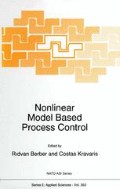Abstract
Continuous digester control for improved uniformity of pulp and fiber properties is gaining more attention as strict final product quality needs and tighter environmental regulations demand much higher performance standards from strategic manufacturing processes. Removal of lignin from wood chips in digesters is a stochastic process, owing to the natural variabilities of the raw material and the physical nature of the digester vessel as a moving packed bed reactor. As additional and particular challenges for feedback control implementations, continuous digesters have long residence times and corresponding time delays, while process measurements are traditionally sparse and infrequent.
Established control approaches conventionally target the extent of reaction, measured as output Kappa number, for process regulation. In practice, on the other hand, it is common to have significant product quality variations even with good Kappa control. Fundamentally, some of the critical pulp properties, like fiber strength, depend on the reaction path in the digester as well as on final Kappa number. Therefore, for continuous digesters it is reasonable to target a nominal reaction path as the control objective rather than just the final conversion. In order to explore the possibilities of model predictive control (MPC) approach to reaction path regulation, an intuitive formulation is developed and tested for the extended modified continuous cooking (emcc) design. Using a simplified nonlinear process benchmark model it is shown that the digester reaction profile can be controlled effectively using five key process conditions as feedback. Three of the process measurements (upper and lower extract EA strengths and the blow line Kappa number) are traditionally measured and easily available. The other two measurements (intermediate Kappa numbers at the end of cook and mcc zones) must be estimated from available process data using a reference model. It is also shown that measurement of process disturbances like chip feed rate and moisture, and white liquor alkali strength can significantly improve controller performance.
Access this chapter
Tax calculation will be finalised at checkout
Purchases are for personal use only
Preview
Unable to display preview. Download preview PDF.
7. References
Christensen, T., Albright, L.F. and Williams, T.J. (1982) A mathematical model of the kraft pulping process, Technical Report 129, Purdue University.
Gustafson, R.R., Sleicher, C.A.., McKean, W.T. and Finlayson, B.A. (1983) Theoretical model of the kraft pulping process, Ind. Eng. Chem. Process Des. Dev., 22(1), pp87–96.
Funkquist, J. (1995) Modelling and identification of a distributed parameter process: the continuous digester, PhD thesis, Royal Institute of Technology, Stockholm.
Miehelsen, F.A. (1995) A dynamic mechanistic model and model-based analysis of a continuous Kamyr digester, PhD thesis, University of Trondheim.
Kayihan, F., Gelormino, M.S., Hanczyc, E.M., Doyle, F.J. and Arkun, Y. (1996) A Kamyr continuous digester model for identification and controller design, proc. of IFAC World Congress, pp 37–42, San Francisco, 30 June–5 July.
Amirthalingam, R. and Lee, J.H. (1997) Subspace identification based inferential control of a continuous pulp digester, proc. of PSE/ESCAPE ′97, May 26–29, Trondheim
Wisnewski, P.A., Doyle, F.J., Kayihan, F. and Arkun, Y. (1997) Measurement selection for model predictive control of the Weyerhaeuser benchmark digester problem, proc. of ADCHEM ′97, June 9–11, Banff, Alberta.
Wisnewski, P.A., Doyle, F.J. and Kayihan, F. (in press) A fundamental continuous pulp digester model for simulation and control, AIChE Journal.
Author information
Authors and Affiliations
Editor information
Editors and Affiliations
Rights and permissions
Copyright information
© 1998 Springer Science+Business Media Dordrecht
About this chapter
Cite this chapter
Kayihan, F. (1998). Kappa Number Profile Control for Continuous Digesters. In: Berber, R., Kravaris, C. (eds) Nonlinear Model Based Process Control. NATO ASI Series, vol 353. Springer, Dordrecht. https://doi.org/10.1007/978-94-011-5094-1_26
Download citation
DOI: https://doi.org/10.1007/978-94-011-5094-1_26
Publisher Name: Springer, Dordrecht
Print ISBN: 978-94-010-6140-7
Online ISBN: 978-94-011-5094-1
eBook Packages: Springer Book Archive

